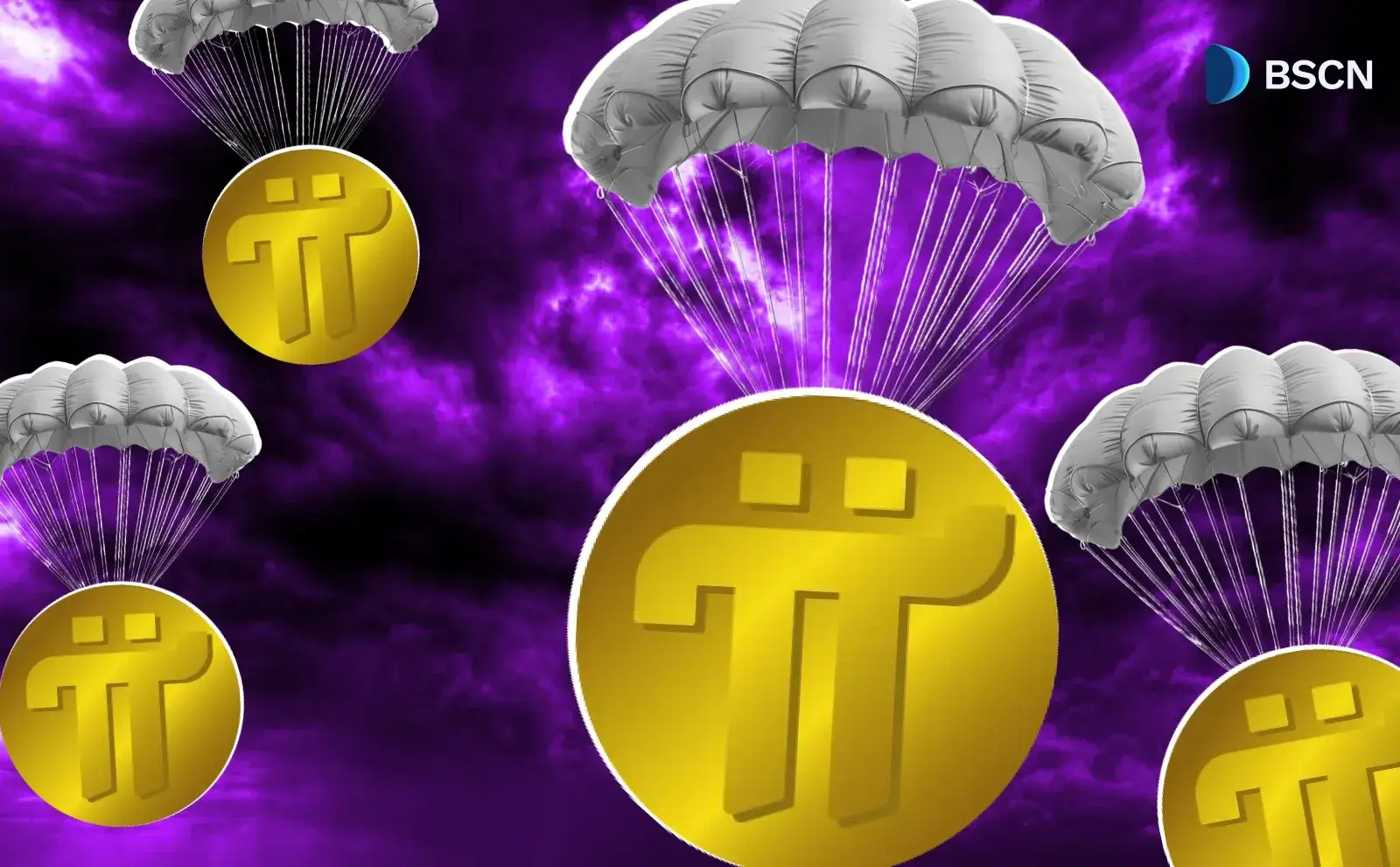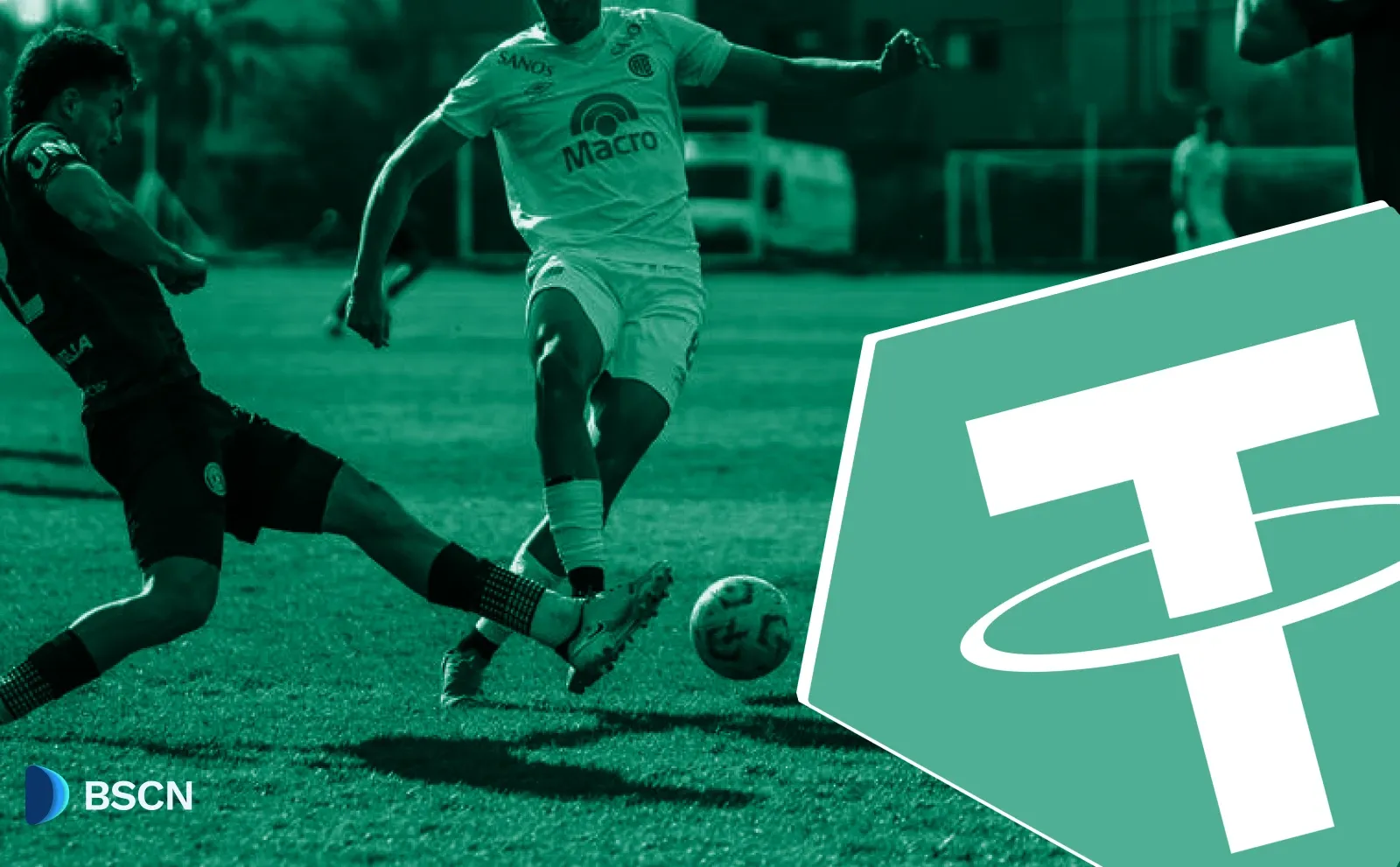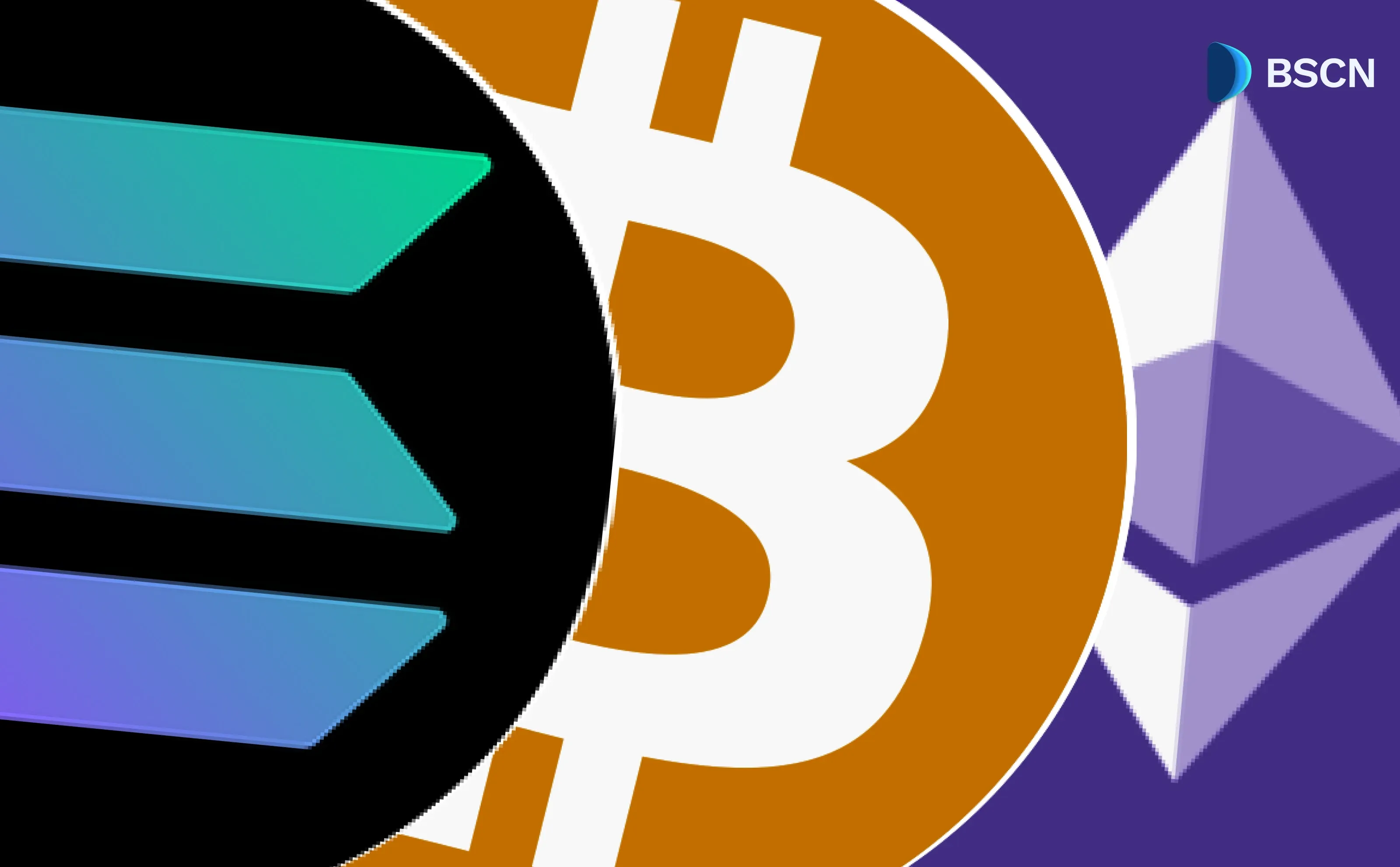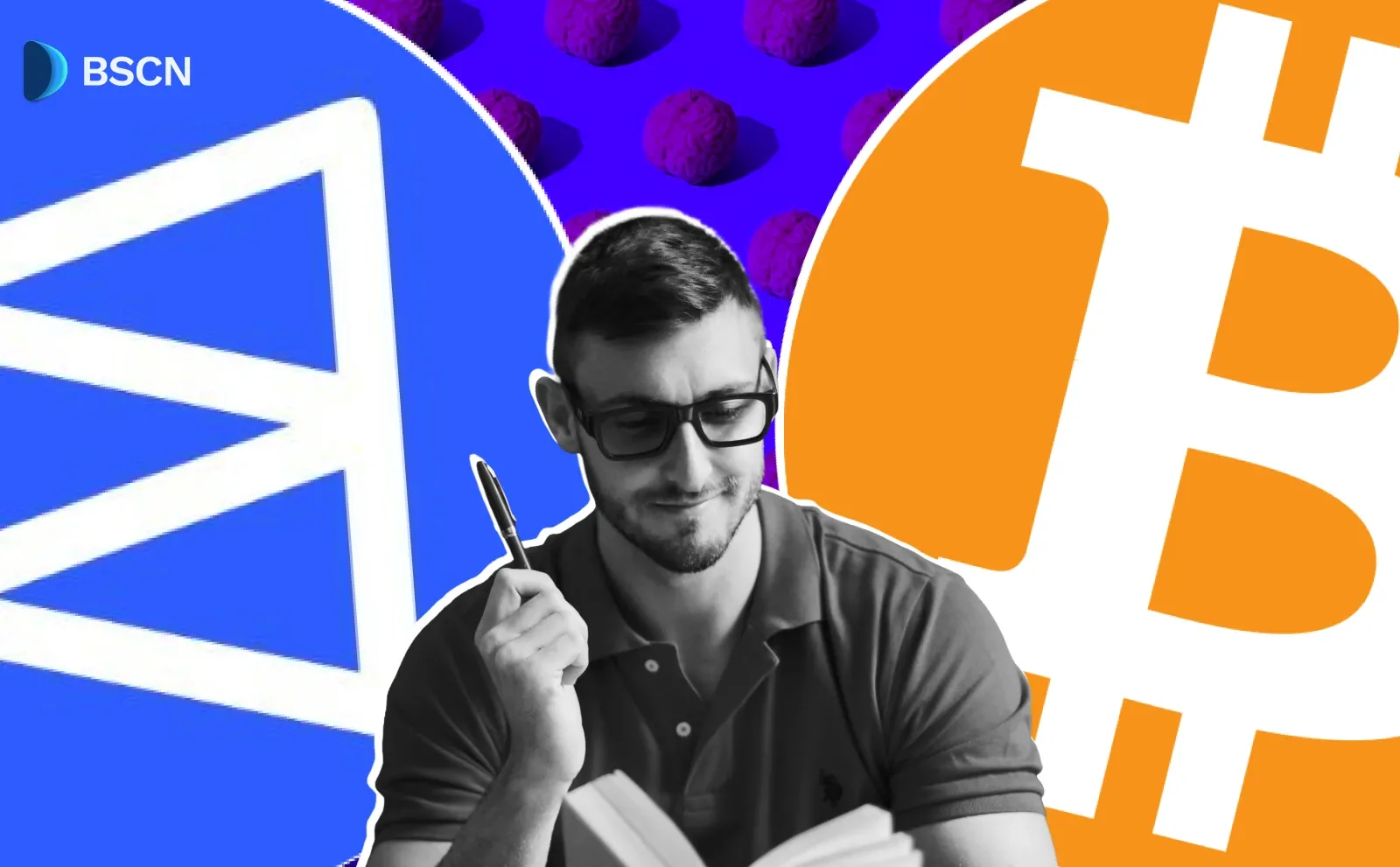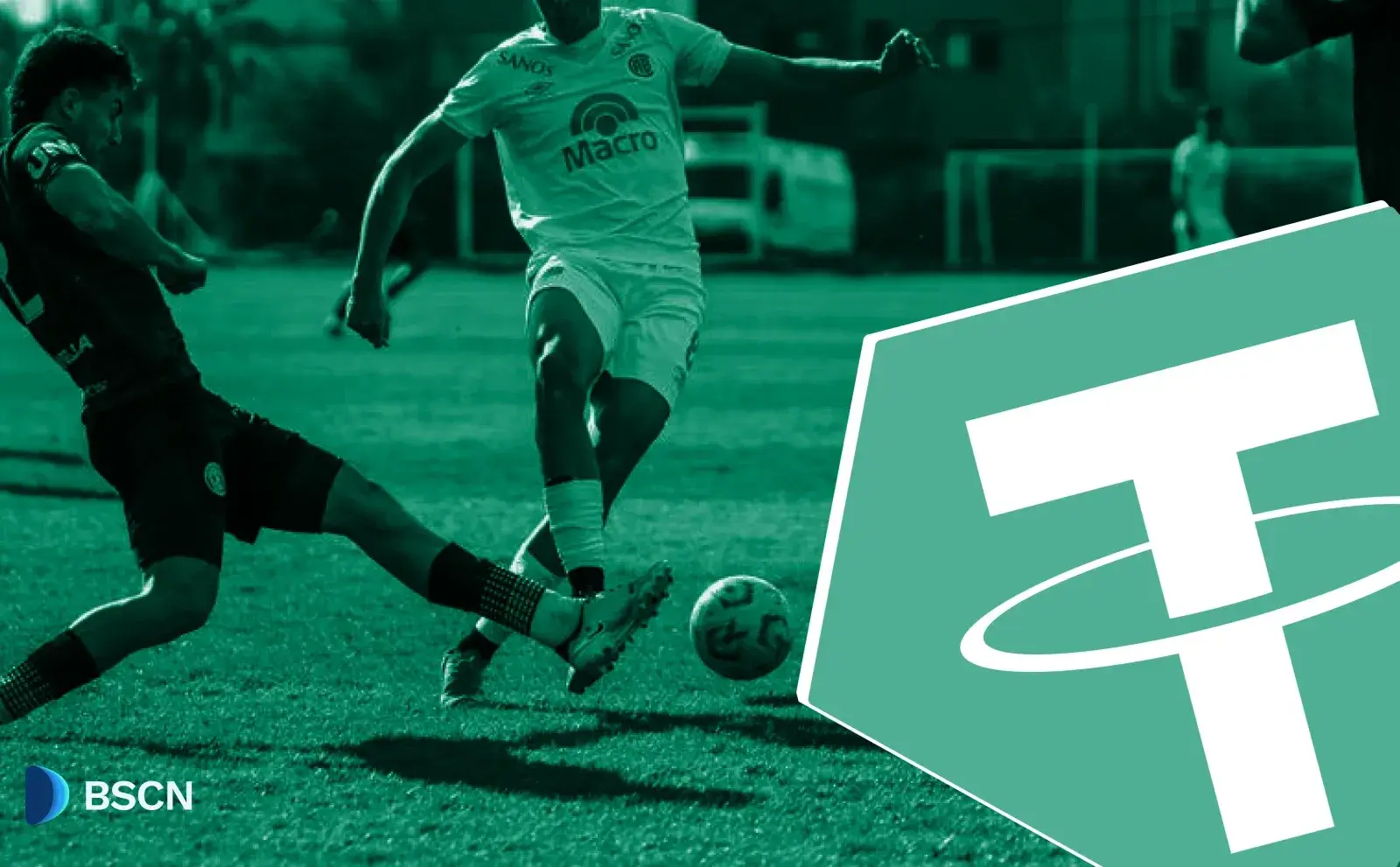Research
(Advertisement)
A Look At Kadena's Chainweb EVM Testnet Progress: A 3-Month Update and Beyond

Kadena's Chainweb EVM Testnet has processed 48,496 transactions in three months, with low gas fees and over 70 committed projects.
UC Hope
October 16, 2025
(Advertisement)
Table of Contents
Update [October 22, 2025]: On Tuesday October 21st, 2025, Kadena’s official X/Twitter account announced the Kadena organization’s complete cessation of business and operation activities.
“We regret to announce that the Kadena organization is no longer able to continue business operations and will be ceasing all business activity and active maintenance of the Kadena blockchain immediately”, began the official post.
The post claimed “market conditions” as the reason behind the shutdown, with little-to-no further clarification beyond this.
The post also highlighted, however, that the “Kadena blockchain is not owned or operated by the company” and that both the $KDA token and the protocol “will also continue in our absence”.
Kadena's Chainweb EVM on Testnet
Kadena's Chainweb EVM Testnet represents a significant advancement in blockchain technology, blending the security of Proof-of-Work (PoW) with Ethereum Virtual Machine (EVM) compatibility. Launched in June, the testnet expands Kadena's braided Chainweb architecture to include EVM support, allowing Solidity developers to deploy smart contracts on a scalable Layer 1 network.
This report compiles research based on the protocol’s X Thread, technical documentation, community feedback, and recent updates to provide a comprehensive overview of the testnet’s progress, features, and future potential.
Kadena and the Chainweb Architecture
Kadena, established in 2016 by Stuart Popejoy and Will Martino, former leads in JPMorgan's blockchain initiatives, operates as a layer-1 proof-of-work blockchain. Its Chainweb protocol uses a braided structure where multiple chains run in parallel, linked through cross-chain proofs. This design supports horizontal scaling without relying on layer-2 solutions.
The EVM Testnet adds five EVM-compatible chains (numbered 20 to 24) to the existing 20 Pact-based chains, resulting in a total of 25 chains. Each EVM chain processes transactions independently but connects via Merkle proofs for asset transfers, avoiding external bridges.
The testnet launched on June 29, 2025, during the EthCC conference in Cannes, targeting Solidity developers by maintaining compatibility with Ethereum standards, while leveraging Kadena's proof-of-work security, which draws from merge-mining akin to Bitcoin's model. With this, the protocol provides resistance to certain attacks common in proof-of-stake systems, such as those based on capital concentration. Most importantly, gas fees remain low due to parallel processing, with the testnet demonstrating fees close to zero even as activity increases.
EVM Compatibility and Developer Tools
The Chainweb EVM Testnet supports full integration with standard Solidity development tools, requiring no modifications to existing codebases. Developers can employ the following:
- Hardhat: for local testing and deployment
- Remix: for web-based editing
- Foundry: for advanced scripting
- Scaffold: for application frameworks
These tools interact with the testnet's RPC endpoints, such as those provided by Ankr, enabling seamless deployment.
Three-Month Performance Metrics
It’s been 3 months of Chainweb EVM testnet 🧵
— Kadena (@kadena_io) October 15, 2025
A high-performance, fully decentralized #EVM chain built for the future of web3.
⛽ Ultra-low gas fees
⛓️ Parallel execution
⚡ Native scalability
Here's what’s been accomplished by $KDA so far 👇 pic.twitter.com/DLZpBMZcO8
Total Transactions Processed: 48,496
Over the initial 90 days following its launch, Kadena's Chainweb EVM Testnet has successfully handled 48,496 transactions distributed across its multiple chains. This volume demonstrates the network's ability to manage a substantial number of operations in a real-world testing environment, where transactions include various activities such as asset transfers, smart contract interactions, and basic account operations. The even distribution across chains highlights the effectiveness of the parallel processing model, which prevents bottlenecks that might occur in single-chain systems.
Wallet Addresses Created: 6,432
During this three-month period, the testnet saw the creation of 6,432 new wallet addresses, a clear sign of increasing user onboarding and interest from developers and testers. Each wallet represents an entry point for individuals or entities to interact with the blockchain, whether for deploying contracts, sending testnet tokens, or exploring features.
This growth in addresses suggests a broadening user base, as new participants set up accounts to experiment with the EVM-compatible environment without incurring real financial risks.
Smart Contract Deployments: 1,019
The testnet recorded a total of 1,019 smart contract deployments, with the majority written in Solidity, the programming language commonly used for Ethereum-based applications. These deployments encompass a range of use cases, from simple token contracts to more complex decentralized applications, allowing developers to test compatibility and functionality on Kadena's infrastructure.
The predominance of Solidity reflects the testnet's design to attract Ethereum developers by supporting familiar tools and standards, facilitating easier migration or experimentation.
Gas Consumption: 78 Testnet KDA
Gas usage on the testnet amounted to just 78 units of testnet KDA over the 90 days, reflecting the platform's low-cost operational model. Gas fees cover the computational resources required for transaction processing and contract execution, and this minimal consumption indicates efficient resource allocation. The low figure is attributable to the parallel chain architecture, which spreads workloads and keeps individual chain loads manageable, resulting in fees that remain near zero even as activity scales.
Collectively, the metrics, as shown in the protocol’s thread, reveal the testnet's robustness in managing increasing activity levels without any noticeable decline in performance. This resilience stems from the braided Chainweb structure, where parallel chains work alongside each other to distribute computational loads, ensuring consistent throughput and reliability for all operations.
Ecosystem Expansion and Committed Projects
The ecosystem around Chainweb EVM has expanded to over 70 committed projects, covering categories from decentralized finance to artificial intelligence.
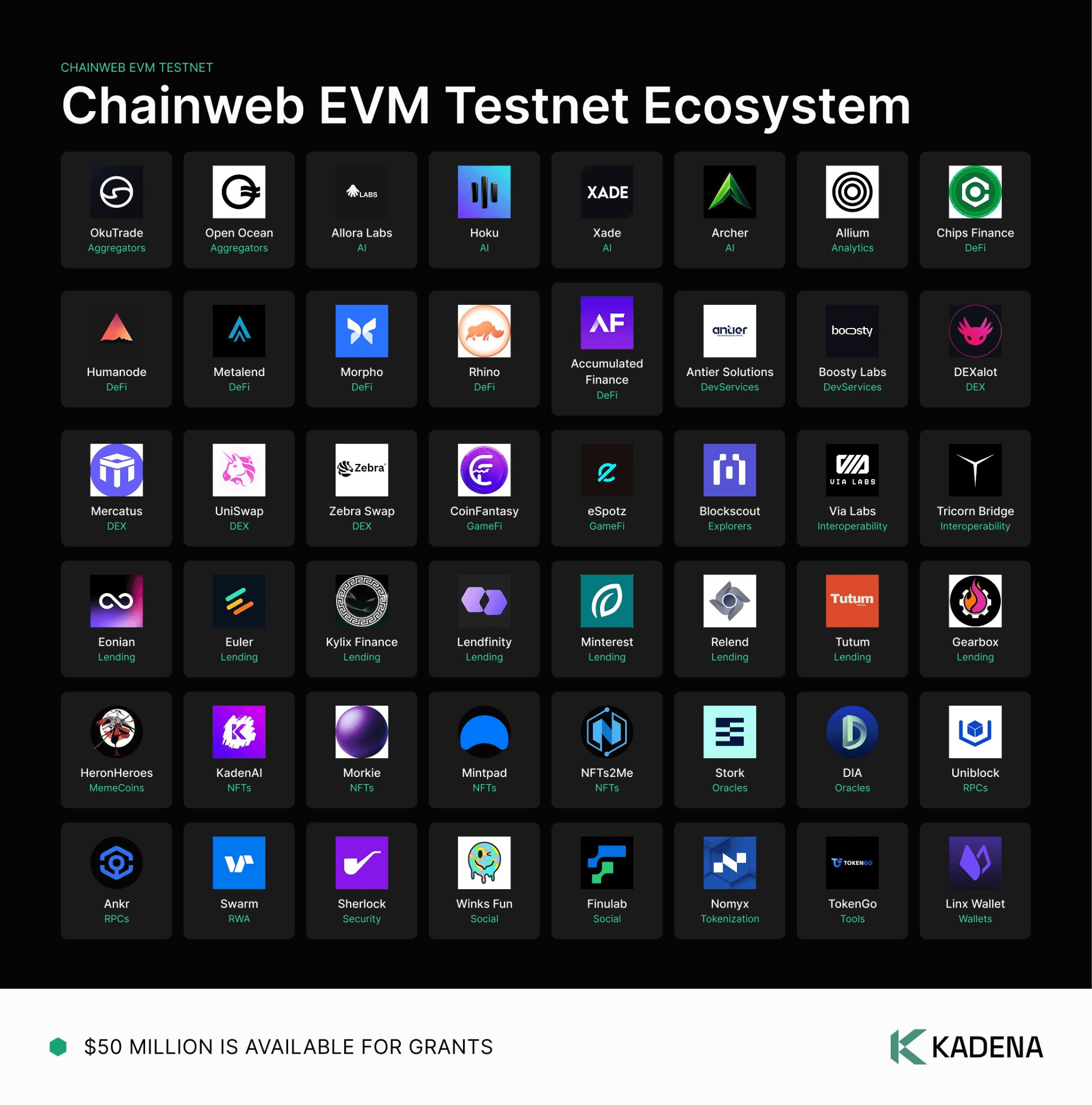
- In aggregators, OkuTrade and Open Ocean have joined.
- AI projects include Allora Labs, Hoku, Xade, and Archer. Analytics features Allium.
- DeFi protocols encompass Chips Finance, Humane, Metaland, Morpho, Rhino, and Accumulated Finance.
- Developer services come from Antier Solutions and Boosy Labs. Decentralized exchanges list DeXalot, Mercatus, UniSwap, and Zebra Swap.
- GameFi includes CoinFantasy and eSpotz.
- Explorers use Blockscout.
- Interoperability involves Via Labs and Tricorn Bridge.
- Lending platforms feature Eonian, Euler, Kylin Finance, Lendfinity, Minterest, Relend, Tutum, and Gearbox.
- Memecoins are represented by HeronHeroes. NFTs include KadenaI, Morkie, Mintpad, and NFTzMe.
- Oracles are provided by Stork and DIA.
- RPC services come from Uniblock and Ankr.
- Real-world assets use Swarm.
- Security is handled by Sherlock.
- Social applications include Winks Fun and Finulab.
- Tokenization involves Nomyx and TokenGo. Wallets feature Linx Wallet.
This list, displayed in Kadena's update graphics, shows involvement across sectors, with many projects testing integrations on the EVM chains.
A recent partnership with Brickken, announced on October 15, 2025, focuses on real-world asset tokenization. The collaboration plans to tokenize $10 million in assets during the testnet phase. This includes compliant features like KYC, AML, and cap table management.
Moreover, Kadena's $50 million grant program supports projects migrating to the testnet, building new applications, or creating tools. The funding is equity-free and aims to accelerate development on Chainweb EVM.
Global Events and Developer Engagement
Kadena participated in several international events to promote the testnet. At ETH Vietnam, the team partnered with Suci Community for hands-on sessions, introducing EVM development to students and builders. This initiative established a developer advocate network starting in Vietnam and expanding globally.
ETHGlobal in New Delhi saw 30 teams participate in a hackathon, resulting in 200 deployments. Projects covered real-world assets, DeFi, bridges, wallets, privacy, streaming, social, gaming, zero-knowledge proofs, identity, and developer tools. Winners were KROSS, BRANDX, and ASSETX.
At TOKEN2049 in Singapore, over 400 teams signed up to pitch projects within two days. This drew applications from various team sizes for grants, highlighting interest in the testnet's scalability and fee structure.
These events, detailed in the October update, have contributed to developer onboarding and project commitments.
Final Thoughts
The testnet serves as a precursor to mainnet integration. Future plans include increasing chain count, improving indexers, and enhancing cross-chain functionalities, with a focus on real-world assets, AI agents, prediction markets, and microtransactions.
Generally, Kadena's Chainweb EVM Testnet has demonstrated transaction processing, user engagement, and ecosystem growth over three months, with impressive metrics. The integration of EVM compatibility with proof-of-work scaling provides developers with tools for low-fee, parallel execution environments. Partnerships such as with Brickken highlight practical applications in asset tokenization.
For blockchain developers, exploring the testnet via evm.kadena.io offers a direct way to assess its features, emphasizing the platform's role in layer-1 advancements.
Sources:
- Kadena Official X Thread: https://x.com/kadena_io/status/1978516477734162464
- Kadena EVM Testnet goes live: https://www.kadena.io/perspectives/ethcc-chainweb-evm-testnet-release-live
- CoinMarketCap Kadena Latest Updates: https://coinmarketcap.com/cmc-ai/kadena/latest-updates/
- Kadena Build on Kadena Page: https://www.kadena.io/build-on-kadena
Read Next...
Frequently Asked Questions
What is Kadena's Chainweb EVM Testnet?
Kadena's Chainweb EVM Testnet is a proof-of-work blockchain layer that supports Ethereum Virtual Machine compatibility, allowing Solidity smart contracts on a multi-chain architecture with parallel execution and low gas fees.
How many projects are committed to the Chainweb EVM Testnet?
Over 70 projects are committed to the Chainweb EVM Testnet, spanning DeFi, AI, NFTs, lending, and more, including notable ones like UniSwap, Morpho, and DIA.
What are the key metrics from the 3-month update?
The 3-month update for Kadena's Chainweb EVM Testnet reports 48,496 transactions executed, 6,432 wallet addresses created, 1,019 smart contracts deployed, and 78 testnet KDA used in gas.
Disclaimer
Disclaimer: The views expressed in this article do not necessarily represent the views of BSCN. The information provided in this article is for educational and entertainment purposes only and should not be construed as investment advice, or advice of any kind. BSCN assumes no responsibility for any investment decisions made based on the information provided in this article. If you believe that the article should be amended, please reach out to the BSCN team by emailing [email protected].
Author
 UC Hope
UC HopeUC holds a bachelor’s degree in Physics and has been a crypto researcher since 2020. UC was a professional writer before entering the cryptocurrency industry, but was drawn to blockchain technology by its high potential. UC has written for the likes of Cryptopolitan, as well as BSCN. He has a wide area of expertise, covering centralized and decentralized finance, as well as altcoins.
(Advertisement)
Latest News
(Advertisement)
Crypto Project & Token Reviews
Project & Token Reviews
Comprehensive reviews of crypto's most interesting projects and assets
Learn about the hottest projects & tokens

